
History of Video Games: Dawn of a New Generation (2005-2006) - Article
by Taneli Palola , posted on 07 June 2016 / 16,950 ViewsBy 2005 there was no question about which console had won the race for first place. Sony's PlayStation 2 effectively controlled well over 60% of the home console market and both the GameCube and Xbox were struggling to push past 20 million units sold. On the handheld front things were even more one-sided, with the Game Boy Advance having been the only notable handheld for the past few years.
2005 would, however, finally bring about a change for both markets; new consoles and handhelds were on the cards and the console race in particular was about to start anew.
As mentioned in the previous article, Sony's PlayStation Portable had already been launched in late 2004 in Japan, but it wasn't until 2005 that the system received a worldwide release. The PSP's launch would effectively mark the first time in over 15 years that Nintendo's hold over the handheld market was seriously challenged. Of course, Nintendo wouldn't go down without a fight and it had its own brand new handheld console, the DS, on the market. With both platforms having successful launches the market was seemingly blown wide open.

But it would be Microsoft that would be responsible for the most important new hardware launch of the year when the American firm released the Xbox 360 in November. The original Xbox had fallen so far behind Sony's PS2 that the unveiling and eventual release of the Xbox 360 took away what little steam the console still had left. By the end of 2005 new original Xbox consoles were no longer being produced and the platform's sales would very quickly begin to diminish.
Microsoft had pushed the 360 to launch early in order to capitalize on being first to market for this new generation. This gave Microsoft time to build up an early lead before any of its rivals could launch their platforms, but the early launch created some notable problems for the Xbox 360.
First of all the Xbox 360 experienced significant shortages at launch. Microsoft had been unable to generate sufficient supply to meet demand and this limited the platform's early sales lead. Secondly, and more seriously, the rushed launch meant there were significant technical issues present in the console, which lead to an unusually high failure rate.

The most infamous of these technical issues was the 'Red Ring of Death', which denoted a general hardware failure. Estimates of the failure rate varied from around 15% all the way to over 50%, depending on the source. Still, despite these problems the Xbox 360's launch was generally considered a success and by the end of 2005 the console had shipped around 1.5 million units worldwide. As was the case with the original Xbox, the Xbox 360 was by far the most successful in North America and lagged far behind in Japan.
Despite being something of transitional period between two console generations, 2005 saw some huge releases on pretty much every single active platform.

While console gaming was about to go through a forced adjustment period, PC gaming was rolling along as usual, with a number of high profile releases coming out throughout the year. Star Wars Knights of the Old Republic II: The Sith Lords was one of the year's first high profile releases. This was soon followed by Brothers in Arms: Road to Hill 30 in March, Guild Wars and Psychonauts in April, and Battlefield 2 in June.
The second half of the year was perhaps even stronger. Dungeon Siege II, Black & White 2, Age of Empires III, and Civilization IV all came out within months of each other. However, it was the FPS genre that ruled the market on PC at this time, with games like Serious Sam 2, F.E.A.R., Quake 4, and Call of Duty 2 all releasing during the latter half of the year and giving fans of the genre a huge amount of variety to choose from.

On the handheld side of things the GBA was still holding strong despite two newer, more powerful portable systems now being available on the market. A lot of this was due to Nintendo treating the DS and GBA as two separate lines, instead of simply replacing the GBA with the newer platform. Of course, this would eventually change, but for the time being the two consoles were able to coexist.
Naturally, it helped that the GBA was still getting high profile games like The Legend of Zelda: Minish Cap, Pokémon Emerald, Fire Emblem: The Sacred Stones, Mega Man Zero 4, and Final Fantasy IV Advance, so the console was far from being on its deathbed.

The DS, for its part, was now entering its first full year on the market, and the frequency of releases was constantly increasing as developers became more and more familiar with the hardware. Nintendo alone released a huge number of games on the system at this early stage, including the likes of WarioWare: Touched!, Kirby: Canvas Curse, Nintendogs, Animal Crossing: Wild World, Advance Wars: Dual Strike, Metroid Prime: Pinball, Mario Kart DS, and Mario & Luigi: Partners in Time.
Third party developers were also on board and games like Castlevania: Dawn of Sorrow, Phoenix Wright: Ace Attorney, Viewtiful Joe: Double Trouble!, and Sonic Rush released on the DS at this stage in its life cycle. As a result the DS managed to sell over 14 million units by the end of the year, but this was just a small sign of things to come.

The PSP was also quickly building up a solid game library. Within a month of its North American launch the handheld had received Lumines, Metal Gear Acid, Ridge Racer, Darkstalkers Chronicle: The Chaos Tower, and Wipeout: Pure. The rest of the year saw a number of notable releases as well, but by far the most significant of these was Grand Theft Auto: Liberty City Stories. This game would eventually sell nearly 8 million copies, making it the best-selling game on the system by a wide margin. Its success would also lead to further GTA games being released on the PSP.

Turning back to the home console market, the Xbox 360 was working hard to establish itself as a must-have console before its competition would inevitably come along and steal the spotlight. Its game library remained relatively thin throughout 2005 - its most appealing early titles being one to two years away - but a small, varied range of titles helped see the console through its first year. These included the likes of Kameo: Elements of Power, Condemned: Criminal Origins, Perfect Dark Zero, Call of Duty 2, Quake 4, and Dead or Alive 4.
As is often the case, it was the existing generation of consoles that still controlled most of the market in these early months of the new generation. The GameCube, despite being plagued by falling sales, was still playing host to numerous big releases at regular intervals. The bigger releases of 2005 for the GameCube included Battalion Wars, Star Fox: Assault, Fire Emblem: Path of Radiance, and Resident Evil 4 (the GameCube notably being the first platform to receive the game). In addition, some notable multiplatform titles such as TimeSplitters: Future Perfect also launched on the GameCube, which helped keep it afloat for a little while longer.
The Xbox didn't fare as well - the Xbox 360 having taken most people's (including Microsoft's) attention. As a result the legacy console's release schedule dried up pretty quickly. Despite this there were still some headline-grabbing releases in 2005 for the Xbox, including Oddworld: Stranger's Wrath, Phantom Dust, Conker: Live & Reloaded, and Forza Motorsport. In addition multiplatform titles like GTA: San Andreas, Star Wars: Battlefront II, and Jade Empire helped see the console through what would essentially be its final year.
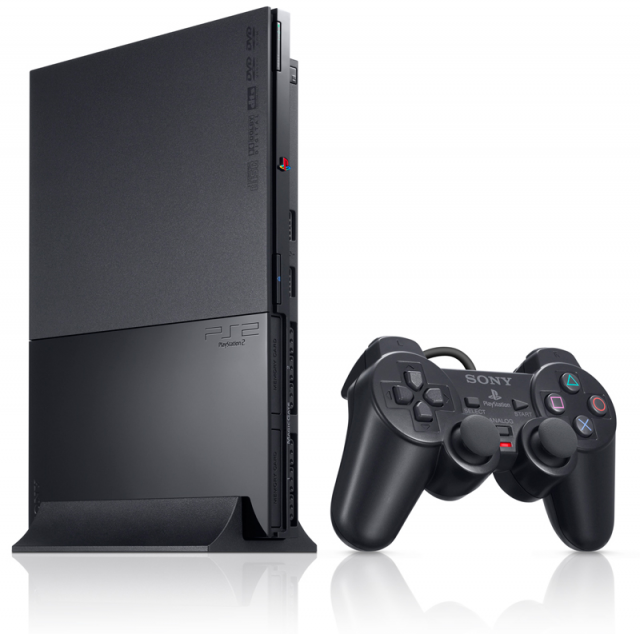
The PS2 was still going as strong as ever, selling roughly 20 million units in 2005 alone and seeing several huge game releases over the year. While both of its main competitors were fairly close to being discontinued by this point, the PS2 actually improved upon its sales from 2004. One major reason for this was the release of the PS2 Slim in late 2004, which boosted console's sales significantly.
As a result of the increased sales the PS2 reached 100 million units shipped to retail in November of 2005, making it the fastest-selling platform of all time to 100 million. This record was previously held by the PS1 and would later be broken by the Nintendo DS.

The number of new games coming to the system showed no sign of diminishing either, from multiplatform releases like Fahrenheit (Indigo Prophecy in North America) and Prince of Persia: The Two Thrones, to exclusives like Xenosaga Episode II: Jenseits von Gut und Böse, Tekken 5, and Gran Turismo 4 (which would eventually become one of the best-selling games on the console with over 11 million copies sold).
And that was just in February. Subsequent months saw the launch of some of the PS2's most notable system sellers and many of its most beloved cult classics. In March players got their hands on Devil May Cry 3: Dante's Awakening and then witnessed the debut of one of Sony's biggest franchises when God of War was released.
Other notable games from the first half of the year included Makai Kingdom: Chronicles of the Sacred Tome, Shin Megami Tensei, Digital Devil Saga, and Shadow of Rome.

Things got even more hectic in the second half of the year, with numerous big new games fighting for attention. In September the console got Radiata Stories and Sly 3: Honor Among Thieves, followed by SOCOM 3: U.S Navy Seals, Jak X: Combat Racing, Ratchet: Deadlocked, and Soul Calibur III in October. In addition there was one other release that has since gone on to become one of the console's most beloved games – Shadow of the Colossus.
Shadow of the Colossus was the second game to be made by Team Ico and is widely considered one of the greatest games of all time. It is also often seen as one of the prime examples of video games as art. I personally consider the game's soundtrack to be one of the finest examples of music in video games ever.
During the final two months of the year the PS2 saw the launch of Fatal Frame III: The Tormented, the debut of Guitar Hero, and the North American release of Dragon Quest VIII: Journey of the Cursed King.

In 2006 the 7th console generation began to pick up the pace, with the Xbox 360 entering its first full year on the market and Nintendo and Sony both launching their own next generation consoles in November. With all three major consoles on the market the race would once again begin afresh, although the Xbox 360 had a modest headstart of roughly 10 million units by the time the competition came around.
The PlayStation 3 made it second to market, being released on November 11th in Japan and the 17th in North America. In Japan the console sold over 80,000 units in one day. Initial demand was very high in North America as well (indeed, Sony was unable to provide enough consoles for the initial launch period) but sales of the PS3 were somewhat muted thereafter due to the console's high asking price and the lack of quality launch titles. By the end of the year the PS3 had sold just over a million units worldwide.

In general the PS3 wasn't very well received at first by either the gaming press or third party developers. There were frequent reports of developers struggling to work with the console's architecture and games being more expensive to create on the PS3, all of which contributed to a raft of initial criticism in the gaming media.
In terms of software the PS3 didn't have much going for it in 2006 either, which made matters worse. Most of its early titles weren't that well received and didn't sell particularly well. The few notable exceptions included Call of Duty 3, MotorStorm, and Resistance: Fall of Man, which was by far the most successful of the console's early games, eventually selling over 4 million copies and spawning several sequels.

Nintendo's Wii on the other hand was an immediate success. In North America the console shipped over 600,000 units in the first eight days of availability. In Japan it sold 370,000 units in just two days, and in Europe the sales reached 325,000 units in two days as well. By the end of the year the console had already sold nearly three million units and was rapidly catching up with the Xbox 360.
One of the Wii's biggest strengths was its uniqueness compared to both the competition and the platforms that had come before it. This, in addition to it successfully being marketed towards a very different audience than the other two consoles, paved the way for an incredible level of success. With the Wii Nintendo was able to tap into an audience that hadn't really been part of the gaming audience in the past.
Unlike most consoles in the past that had been generally marketed towards male children and teenagers, the Wii was marketed for everyone. The key reason this marketing drive succeeded was because of the platform's use of motion controls and a marketing campaign that demonstrated how easy they were to use.
As was the case with the Xbox 360 and PlayStation 3 before it, the Wii didn't have that many big games available at launch, but the few it did have were more than enough to drive sales for the consoles first few years. The Legend of Zelda: Twilight Princess was released almost simultaneously on both the Wii and GameCube, giving Nintendo's long-time fans something to play on the console, while Wii Sports and Wii Play attracted the more casual audience that would quickly flock to the console.

By 2006 the Xbox 360 had by far the best line-up of games of the three new consoles on the market thanks to its head-start. Major 2006 releases for the console included Dead Rising, Saints Row, and Tom Clancy's Ghost Recon Advanced Warfighter. In addition, the Xbox 360 was the only other platform besides PC to get Elder Scrolls IV: Oblivion that year. The game proved incredibly popular and became the second best-selling game of the year on the Xbox 360.
The biggest game of the year, however, would soon become one of the Xbox brand's flagship titles. That game was Gears of War. It was by far the most hyped exclusive on the 360 by that point in time and it quickly became a huge success, ultimately selling over 6 million copies. Its success also gave Microsoft another system selling franchise to rely on.
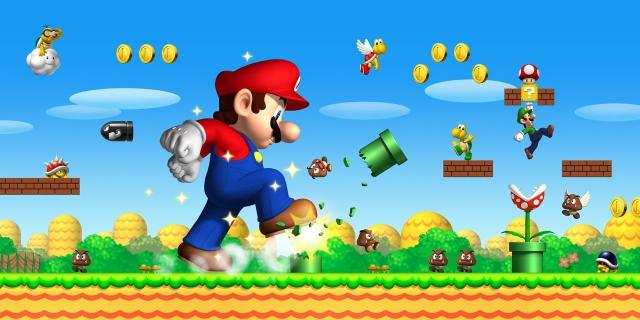
With respect to the handheld market, the GBA was slowly being phased out by 2006, but it did still receive some key releases, including Mother 3 (but only in Japan), ports of Final Fantasy V and VI, and Tales of Phantasia. The Nintendo DS on the other hand saw some absolutely massive releases during 2006. Some of the (relatively) smaller games of the year included Metroid Prime: Hunters, Yoshi's Island DS, the 3D remake of Final Fantasy III, Kirby: Squeak Squad, Castlevania: Portrait of Ruin, Cooking Mama, and Star Fox Command.
The two biggest games of the year on the DS however were Brain Age: Train Your Brain in Minutes a Day!, which sold over 20 million copies, and New Super Mario Bros., which eventually became the best-selling game on the DS at nearly 30 million copies sold. The system itself had a huge year as well, selling over 20 million units in 2006 alone.

Sony's PSP wasn't performing quite as well as Nintendo's DS, but by selling close to 10 million units in 2006 and getting some of the platforms biggest ever releases it was still very much in the conversation. These included Medal of Honor: Heroes, Daxter, and the biggest game of the year and one of the best-selling games in the handheld's history – Grand Theft Auto: Vice City Stories.
Other major releases of 2006 included Tekken: Dark Resurrection, Valkyrie Profile: Lenneth, LocoRoco, Killzone: Liberation, Metal Gear Solid: Portable Ops, and Syphon Filter: Dark Mirror, so while the PSP wasn't able to keep up with the Nintendo DS in sales, it was still proving a definite success in its own right.

Apart from the PS2, the previous console generation was more or less done by the end of 2006. The GameCube received Baten Kaitos: Origins, Harvest Moon: Magical Melody, and The Legend of Zelda: Twilight Princess but not much else. Similarly, the Xbox seriously lacked for big new games by 2006; the one key exception being Tom Clancy's Splinter Cell: Double Agent, which had its highest rated version on the Xbox.
Both consoles still got a decent amount of multiplatform titles, but in general they performed best on either the PS2, PC, or one of the 7th generation consoles. These included Hitman: Blood Money, Just Cause, and Need For Speed: Carbon, amongst others.

For the PS2, the first half of the year was filled with smaller, low profile titles, with JRPGs especially showing up in force. In addition there were a few bigger releases sprinkled throughout the same time period. Some of the smaller releases included the likes of Tales of Legendia, Drakengard 2, Grandia 3, Shadow Hearts: From the New World, Onimusha: Dawn of Dreams, Suikoden V, Steambot Chronicles, and Forbidden Siren 2. Perhaps the biggest release on the console during the first half of the year was Square Enix's Kingdom Hearts 2, which still remains the second best-selling game in the series with total sales of over 4 million copies.
The latter half of the year was very similar in terms of new games. Again, a large number of smaller titles were released every month, which filled the gaps between higher profile releases. During the last six months of the year the console saw Disgaea 2: Cursed Memories, Xenosaga Episode III: Also Sprach Zarathustra, Valkyrie Profile 2: Silmeria, Tales of the Abyss, God Hand, and perhaps most notably, Okami.

Okami is often seen as one of the PS2's best games, due to its excellent gameplay, unique visual style, and overall high quality. Unfortunately, it was also one of the most disappointing games of 2006 in terms of sales as it was unable to reach a very wide audience, possibly due to the somewhat unusual subject matter and visual style that deviated from pretty much all other games on the market at the time.
Along with these smaller games the end of 2006 also saw the launch of Guitar Hero II - to both critical acclaim and great sales - and the biggest game of the year on the console by quite a decent margin - FInal Fantasy XII. Final Fantasy XII was the first mainline installment in the series in nearly four years and the first single player game in almost five. It would also prove to be one of the most divisive entries in the long-running series amongst fans.
Even after nearly six years on the market and newer, more powerful consoles now available, the PS2 was still holding strong. In 2006 the PS2 still sold nearly 14 million units, losing out only to the Nintendo DS. That would of course change, but for the time being the PS2 still reigned supreme.

Finally, on PC things were moving along as usual. The platform once again received a huge number of releases in 2006, many of which were platform exclusives. These releases included, but were not limited to: Star Wars: Empire at War, The Lord of the Rings: The Battle for Middle-Earth 2, Dreamfall: The Longest Journey, Guild Wars: Factions and Nightfall, Heroes of Might and Magig V, Caesar IV, Battlefield 2142, Neverwinter Nights 2, Medieval 2: Total War, and Half-Life 2: Episode One, amongst numerous other games.
In many ways 2006 was still a transitional period for the video game industry. The new consoles were in the process of establishing themselves while the previous generation was holding fairly strong, largely due to the huge presence of the PS2, both in terms of hardware and software sales. However, by the end of next year the newer consoles would truly begin to take over the marketplace and start to set the pace for coming years in the industry.
And that's where we'll end our look at the history of video games for now. As always, thanks for reading.
More Articles
Those years really were the highlight of handheld gaming. From one significant handheld on the market for years to three: The GBA, the DS and the PSP were able to grow significantly despite competition with each other, and they would just kept getting bigger until mobile came along.
Man that was a good few years where RTS games were at a high point. I miss those days when I had plenty of free time to play Middle Earth, Empire at War, Generals and the like.
As always, the article is simply spectacular. The seventh gen was amazing due to the fact that anything you chose was a guaranteed win. The Wii had games. The Xbox had games. SO did the PS4, PSP, and DS. It was simply an amazing time to be a gamer. Add in the fact that DLC didn't invade games yet, you could easily argue this generation was one of the best.
It was def not an era for my beloved Sony :(. It was also the era of Western games rising thanks greatly to Xbox 360 as well as PC.
Til this day, i still wondered what would happened if the PS3 wasn't the least favorite out of all 3 in the early state of the gen. I guess things would change a lot. Maybe Japanese games are still growing strong, or maybe, the PS4 went opposite and turn into complete flop XD.
One thing for sure tho, dat i fuckin love video games!
Four of my favorite video games of all time were released during this period: Dragon Quest VIII, Okami, Final Fantasy XII, and Twilight Princess. Throw in all the under-the-radar games coming out and the plethora of handheld options and those years were a banquet of marvelous games.
i miss that era :(








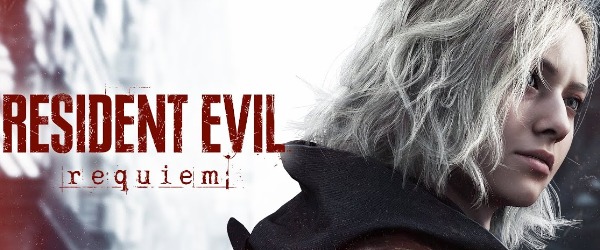
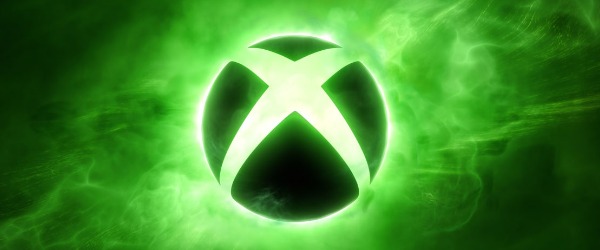
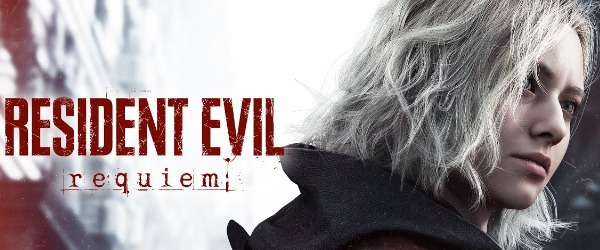
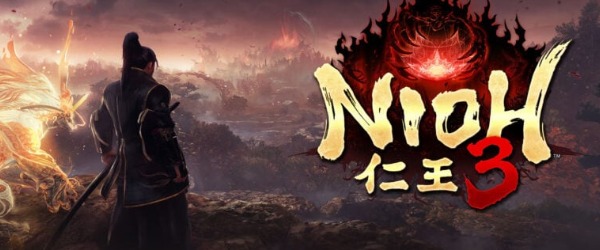










 Essay Pro
Essay Pro